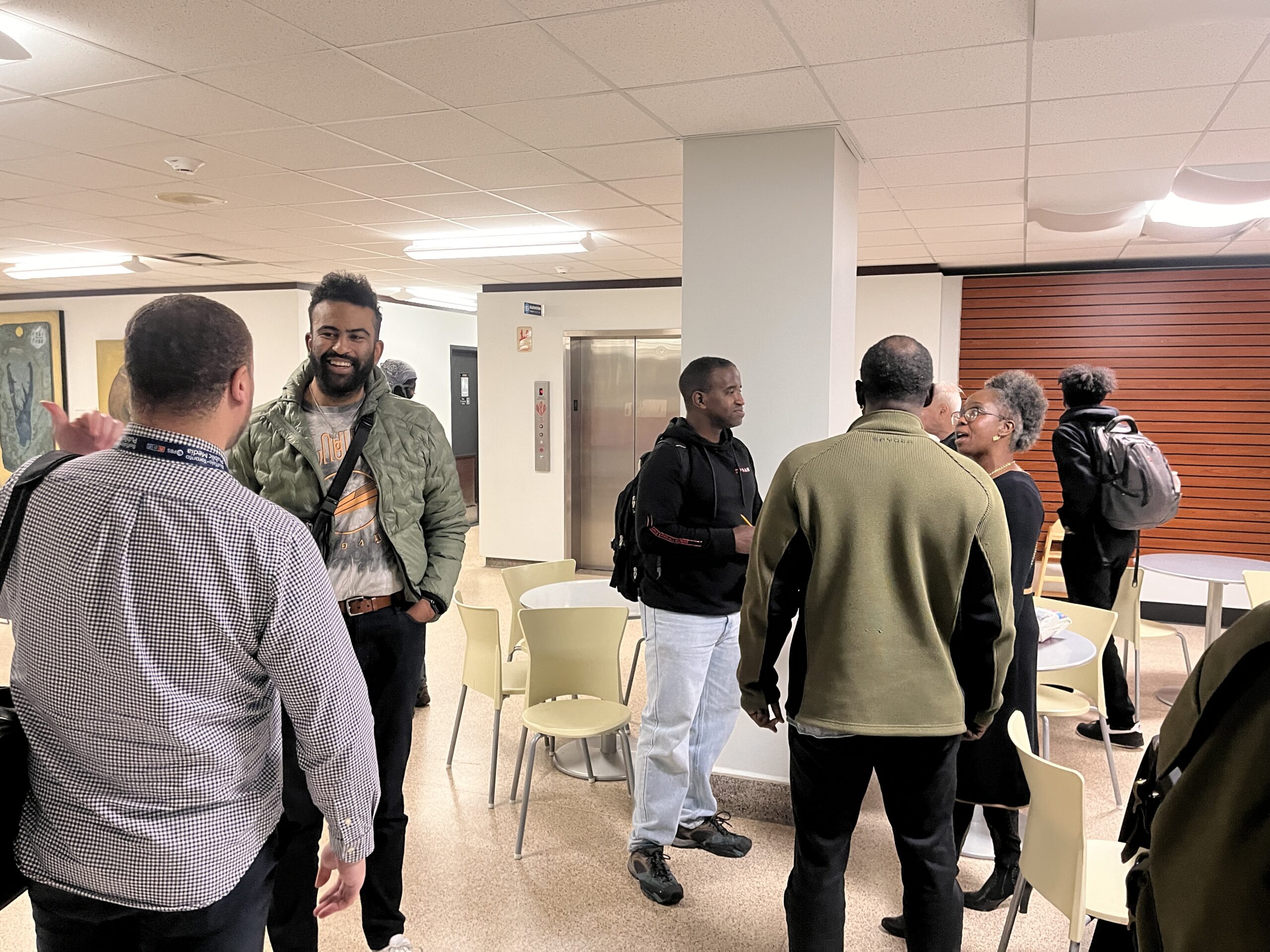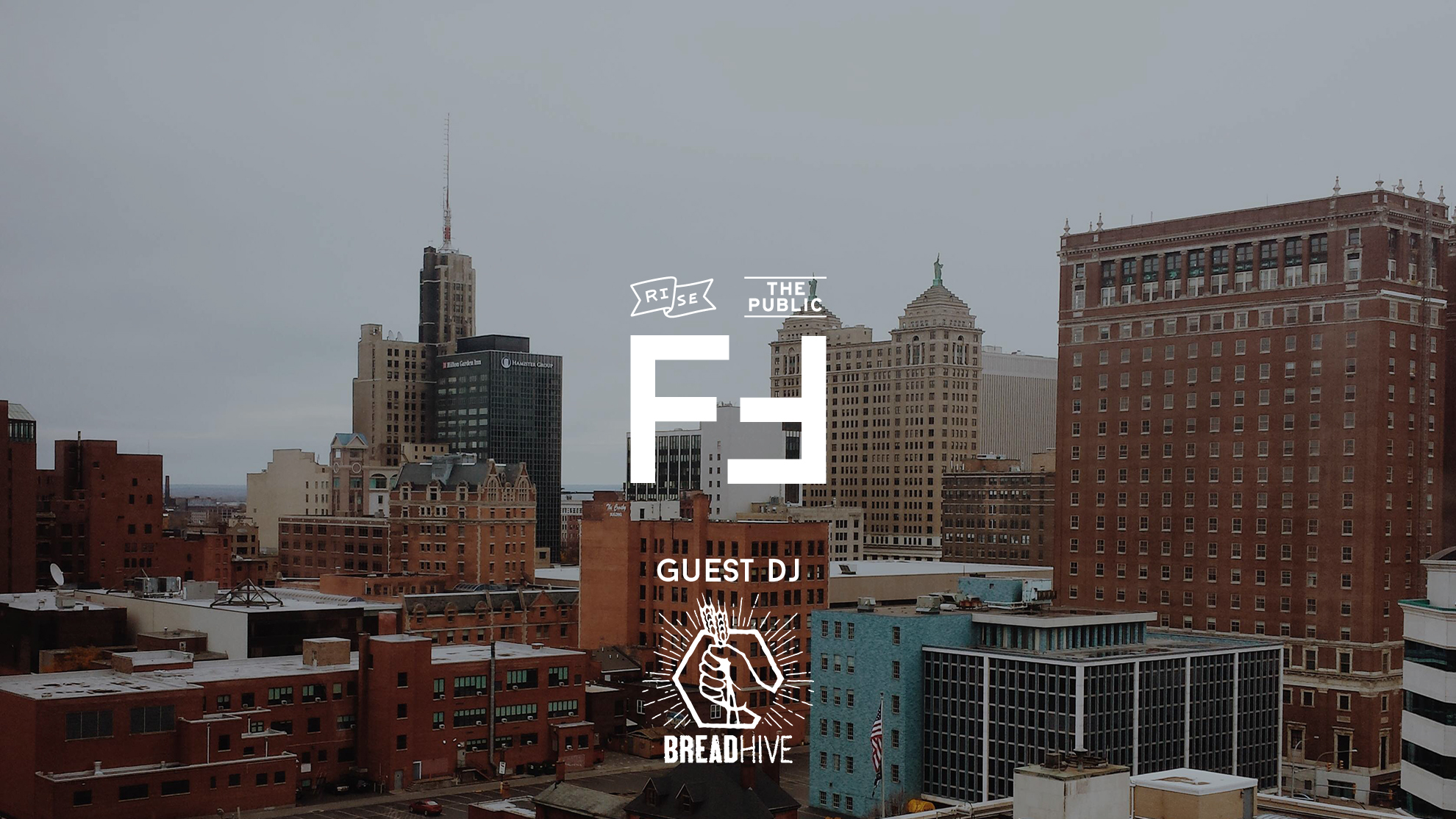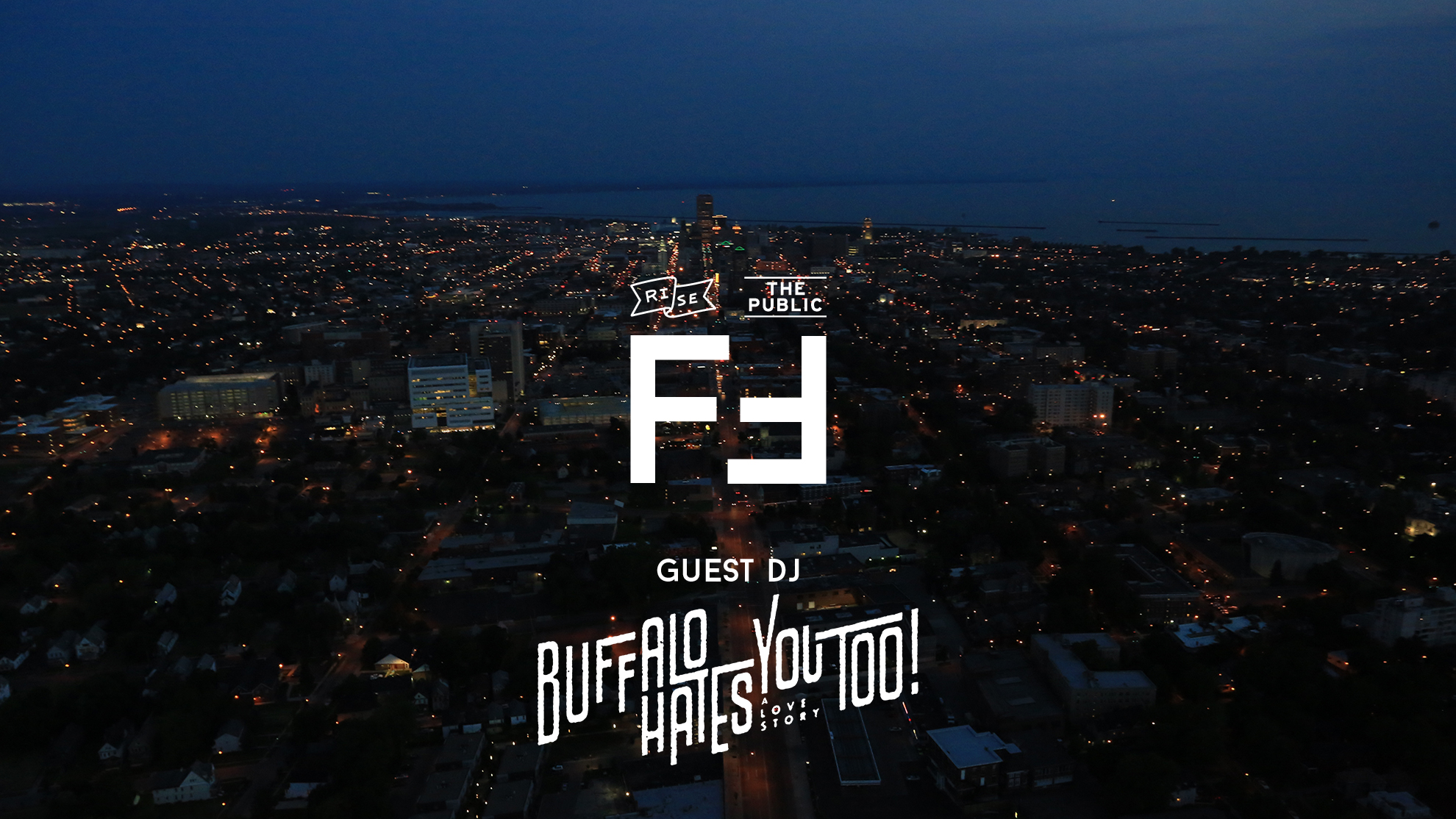Calgary Baptist Church held the first community-led informational meeting about the proposed Humboldt Cap project on Thursday evening at the Museum of Science.
The NYS DOT sent former Buffalo Common Councilmember Rich Fontana to answer questions from the audience.
The is only the second time engagement around the project has allowed attendees to sit in the same room, and allow the entire crowd to hear the questions and answers. For nearly two years, the NYS DOT’s idea of engaging the community was to hold these event in a hallway where questions were addressed one-on-one, which kept attendees in the dark about major concerns their own neighbors had.
The NYS DOT is fast-tracking this project, which will cost more than $1Billion dollars to tear down, rebuild, and add a cap to the urban expressway. The cap will only stretch from roughly Best Street to Ferry Street, making it the most expensive stretch of highway on the planet when construction is complete. They are doing only an environmental assessment. That’s the very shortened version of a full Environmental Impact Statement – a study that usually needs a full year to complete. The “EA” as Fontana referred to it, closes all public comment on 10.27, so neighbors’ anxiety has been heightening this month, wondering if there is any way to slow this project down.
When a truck hit the Dodge Street bridge earlier this year, it was revealed to many that the walls of the Humboldt Expressway are lined with asbestos – an attempt to waterproof them in the 1960s. According to a Humboldt Parkway resident following this entire saga, it cost over $150,000 just to clean that asbestos from that crash up. No one from DOT mentioned to the Museum of Science or Charles R. Drew Science Magnet School that work was going on at their doorstep. The reconstruction plans call for taking down the walls and rebuilding them. NYS DOT claims there will be no negative impact on the surrounding homes when that asbestos, roughly 250,000 square feet of it, is taken down with the walls.
Despite the clear presence of that mesothelioma- and cancer-causing chemical, the NYS DOT still does not feel a full environmental impact study is necessary.
Gina Davis and Rev. Corey Gibson, together part of the Jes Breathe Block Club, were gracious enough to welcome the community to this meeting, and they did their best to make the crowd of neighbors in attendance heard, while keeping discussions civil. Attendees could fill out an index card and pass it to the front for Gibson to read the question on the microphone, and Fontana to reply. Gibson got through as many questions as he could.
Over 10 times, Fontana did not have an answer to the question posed, and there was no way to find out the answer at a later date. That had the crowd pretty frustrated. There were several cheers and jeers throughout the evening as neighbors were convening – some new to all the information presented, some having heard a bit about it, and were eager to find out more, some there to learn for the first time what was at stake.
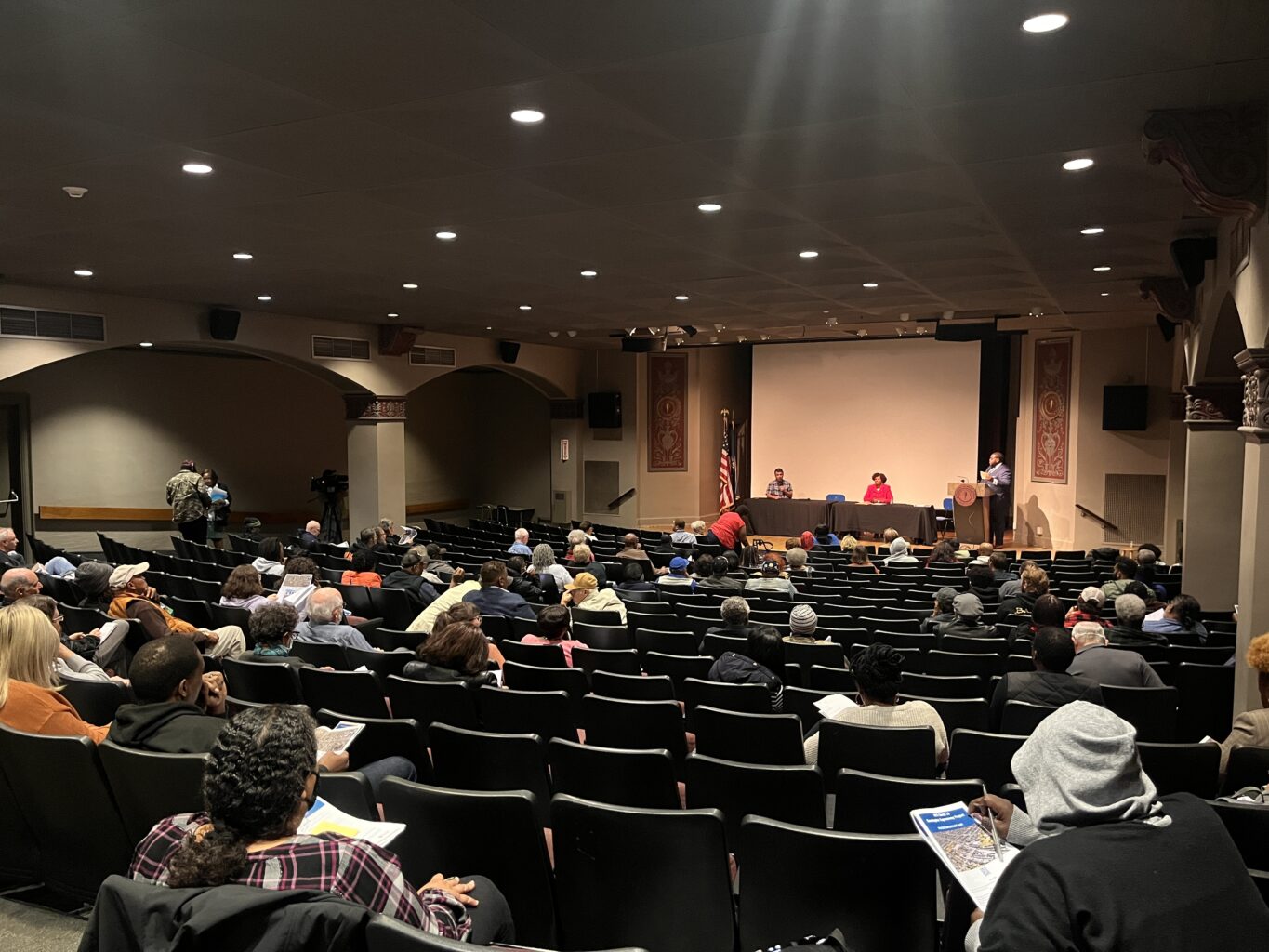
Some rough notes, not word-for-word quotations, of questions, answers, and crowd reactions below:
Question from crowd:
When conducting an air quality analysis, why was the current air quality surrounding the expressway compared against a neighborhood in South Buffalo near the I-190, and not against a Bidwell/Lincoln/or Chapin Parkway, which is what Humboldt could be if it were just filled in?
Answer from NYS DOT:
Well, we needed to compare it to another 6 lane highway, not a parkway.
Question from crowd:
How will the asbestos in the walls be managed during construction?
Answer from NYS DOT:
I do not have an answer, but it shouldn’t affect the neighborhood.
Question from the crowd:
When this cap is put in, with its three feet of soil and trees, who will maintain the stretch of greenery and make sure the trees survive and grow?
Answer from NYS DOT:
We don’t know.
Question from the crowd:
Filling the entire expressway in at a cost of $250million, was once an option. Why was it dropped?
Answer from NYS DOT:
Where would the traffic go? The arterials would struggle to to handle all the traffic coming in on them.
[Note from Rise: There was no discussion of the dropping numbers of commuters since COVID with the rise of remote work. No discussion of using the $800million saved to build a train line out to the airport like other modern American cities, and put commuters on that. No discussion of how traffic concentrating onto the expressway killed roughly 70% of the businesses along each of those arterials within 10 years after its construction. Couldn’t pushing traffic back onto them be a real action to promote economic growth in an East Side that has received nothing but empty promises for decades?]
Question from the crowd:
What will happen to the air quality at the north and south ends of the tunnel?
Answer from the DOT:
There will be a higher level of pollution at those ends than there is now. But it’s still under the federal standard that would call it a hazard.
[Note from Rise: The air quality surrounding the expressway is already bad for people’s health, and they’re saying it’s going to get worse. The Trump administration lowered air quality standards, so what good is it to say they’re not considered a federal hazard? Please check out the graphics put together by students at University at Buffalo, Department of Architecture, Small Built Works Program that illustrate what’s currently the case, and what will happen after construction is complete, and the fans at both ends of the tunnel are turned on. We’ll cover these graphics more in-depth on a future post. There are additional graphics for context at the bottom of the page:]
–
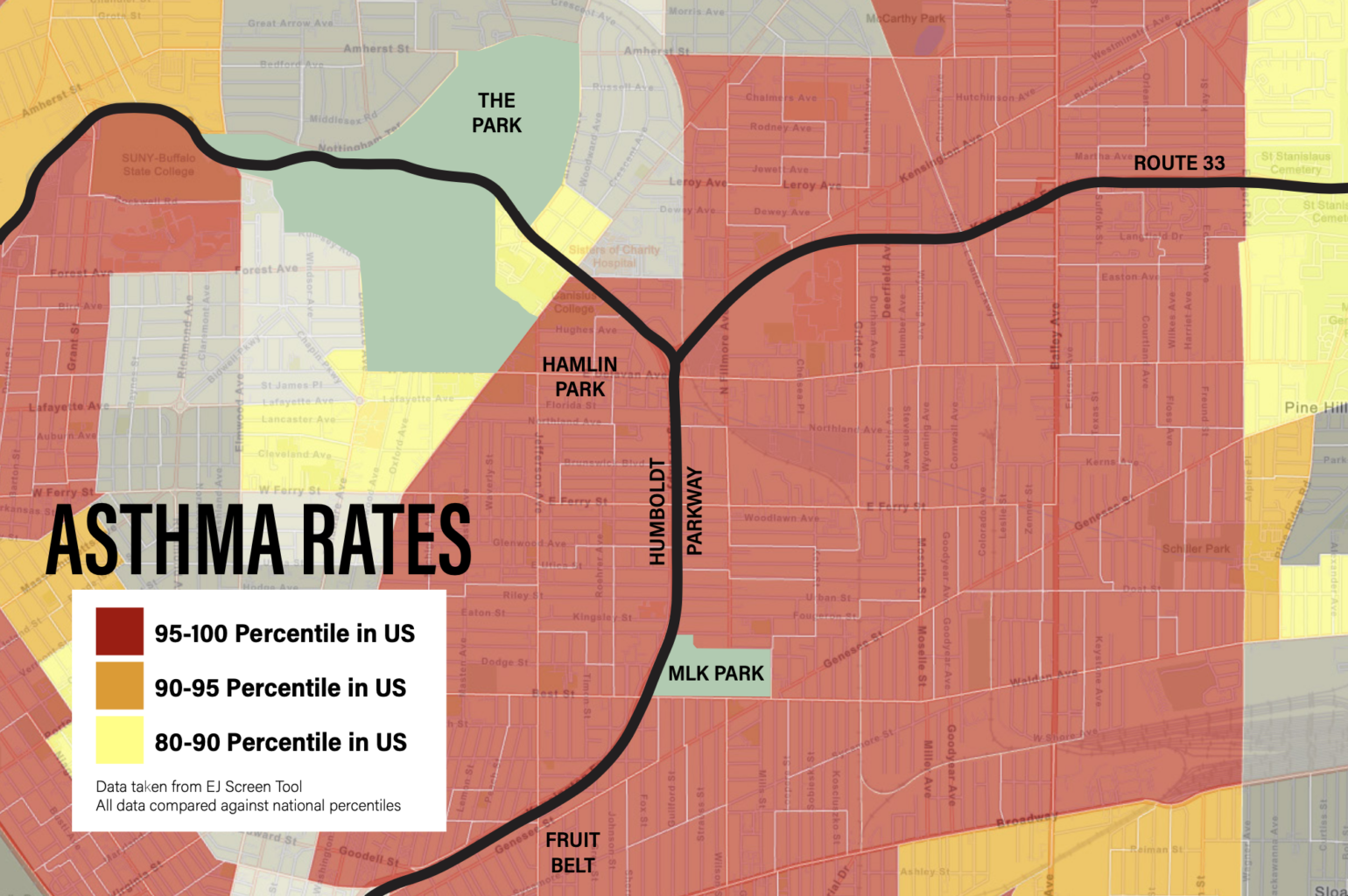
– Victoria Thompson from https://ejscreen.epa.gov/mapper/
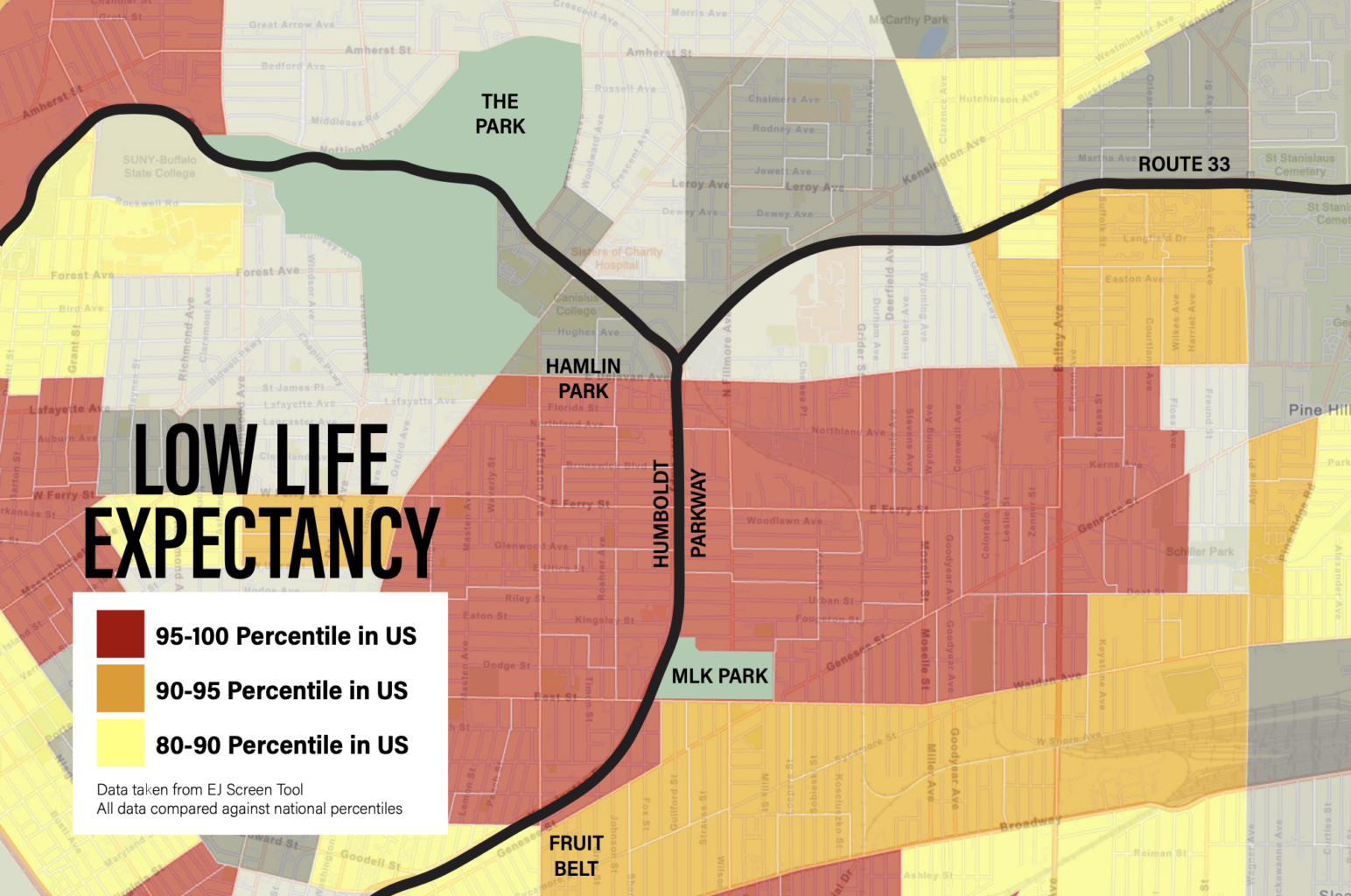
– Victoria Thompson from https://ejscreen.epa.gov/mapper/
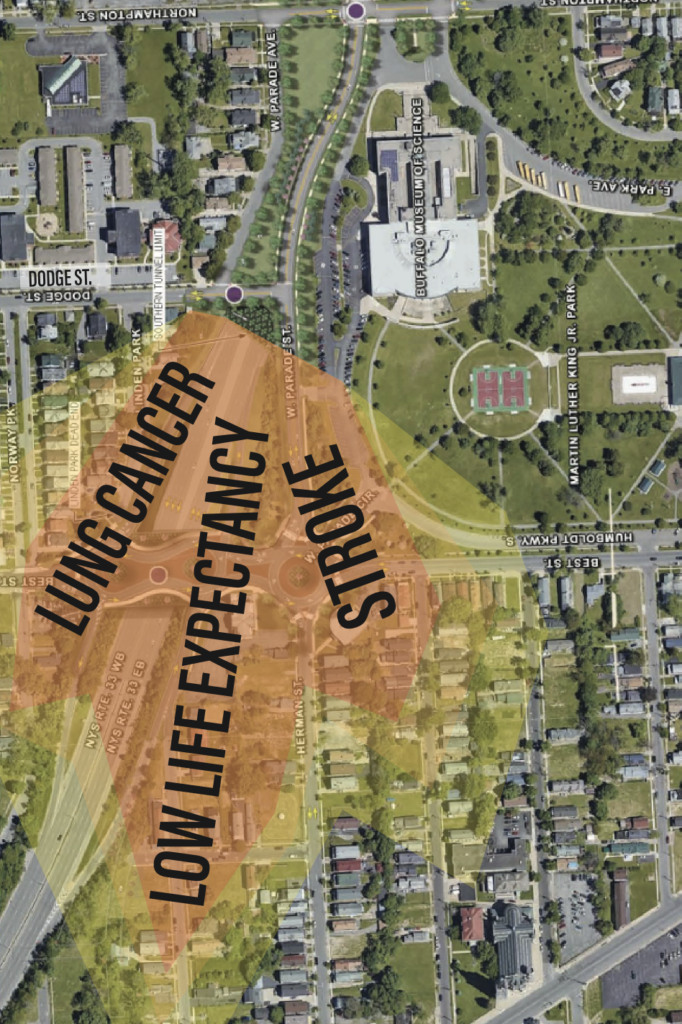
– Ryan Edwards
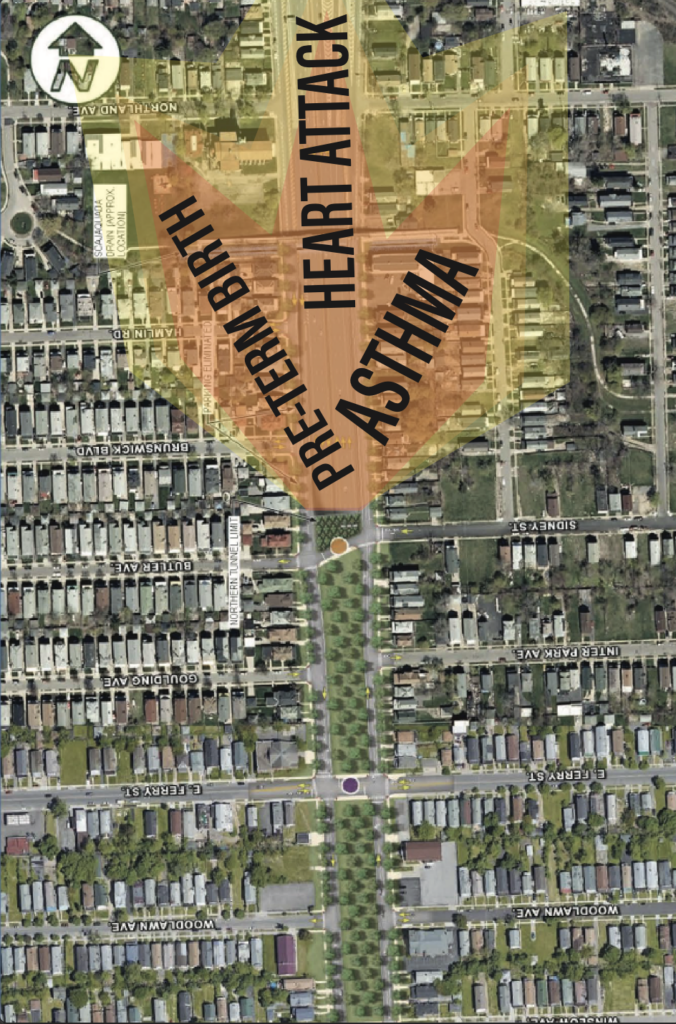
– Ryan Edwards
Here, a thread where the room’s conversation went away from index card Q&A.
Question from the crowd:
Who asked for this project to happen?
Answer from DOT:
The community did. Errrr members of the community [a gaffe made multiple times throughout the night].
Crowd: Who in the community? How many people?
DOT: ROCC
Crowd: Who is ROCC?
DOT: Restore Our Community Coalition. There’s Stephanie Barber Geter… Richard Cummings… some others.
Crowd: Who are those people?
DOT: Would anyone here tonight from ROCC please stand up?
[No one from ROCC was present in the 150+ person crowd]
Question from the crowd:
Aren’t the walls in the Fruit Belt section crumbling as well? How much will that cost to fix?
Answer from DOT:
I’m not sure what those walls are made of.
Question from the crowd:
How can we stop this project?
[Applause and cheers]
Answer from DOT:
The EA open comment period continues through October 27. If you’re a neighbor who doesn’t want it, you should make your comments by then, or talk to your representatives.
[EA = Environmental Assessment – not the full-fledged EIS this project deserves]
[For those living in the neighborhoods surrounding the expressway, that is State Senator Tim Kennedy (Chair of Transportation Committee) and Assembly Majority Leader Crystal Peoples-Stokes. That’s a lot of power to get this stopped if they feel their constituents want what was taken from them in the 1960’s returned, and all the improved health outcomes that would go along with it.]
–
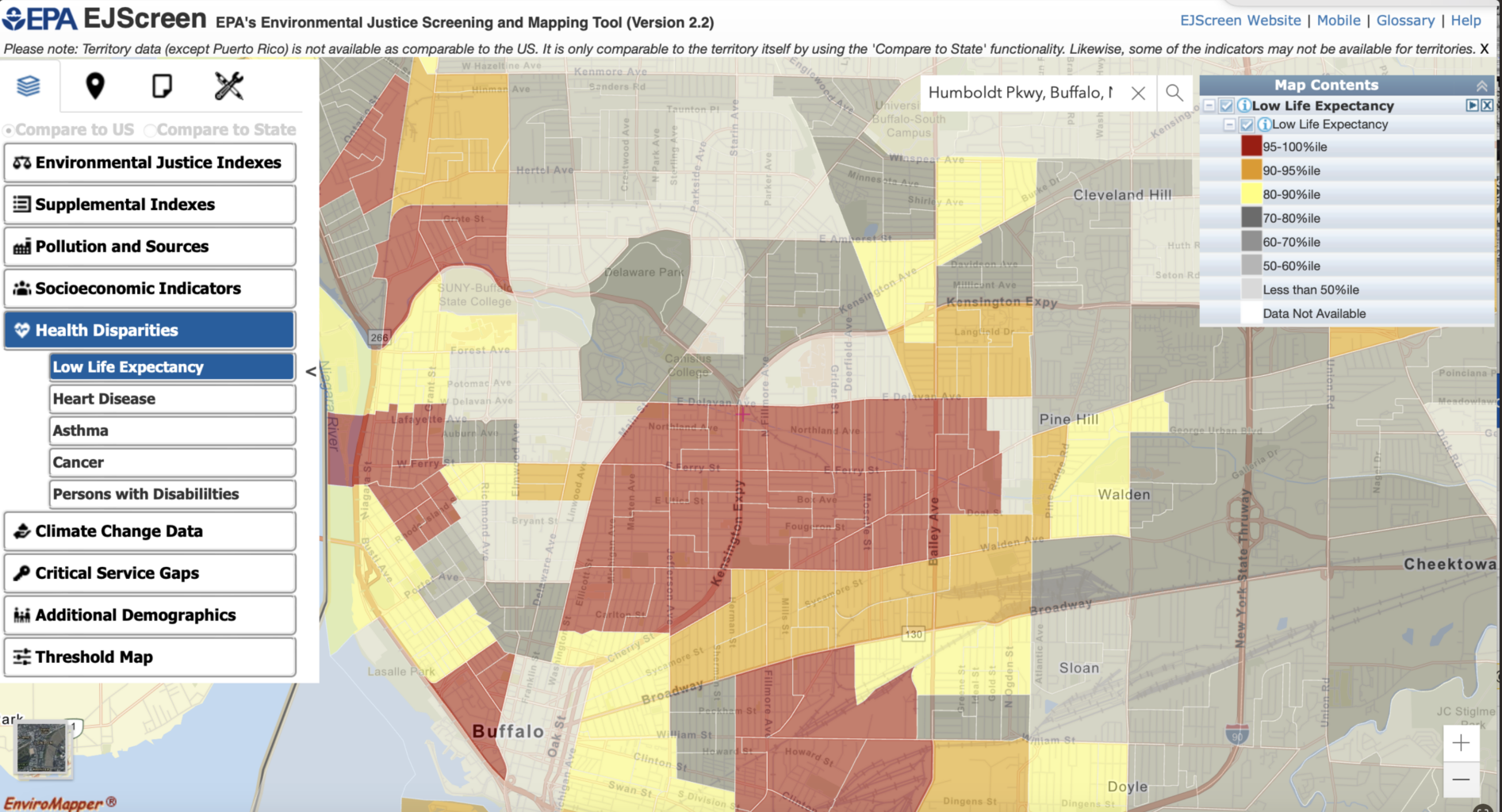
–

–
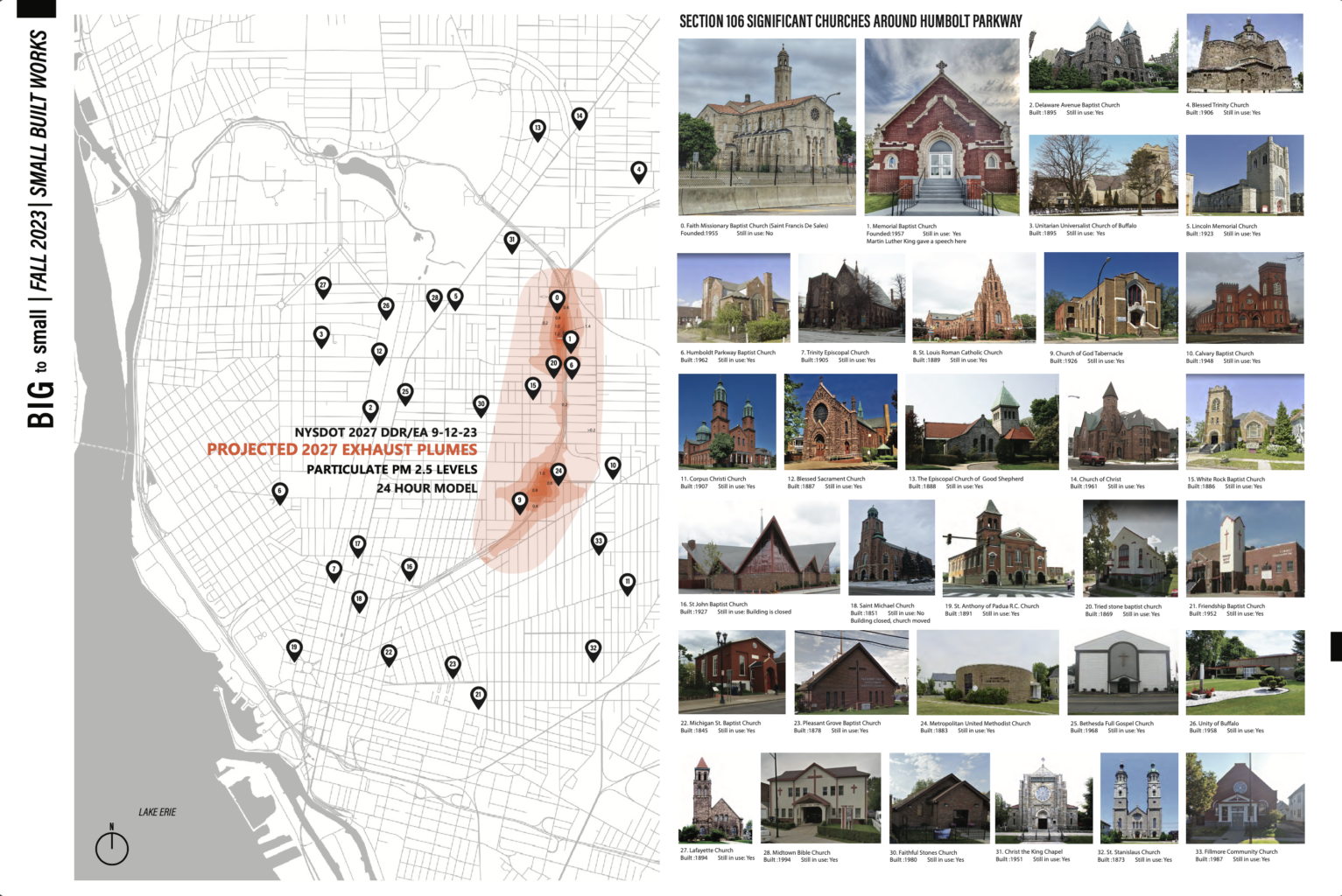
–
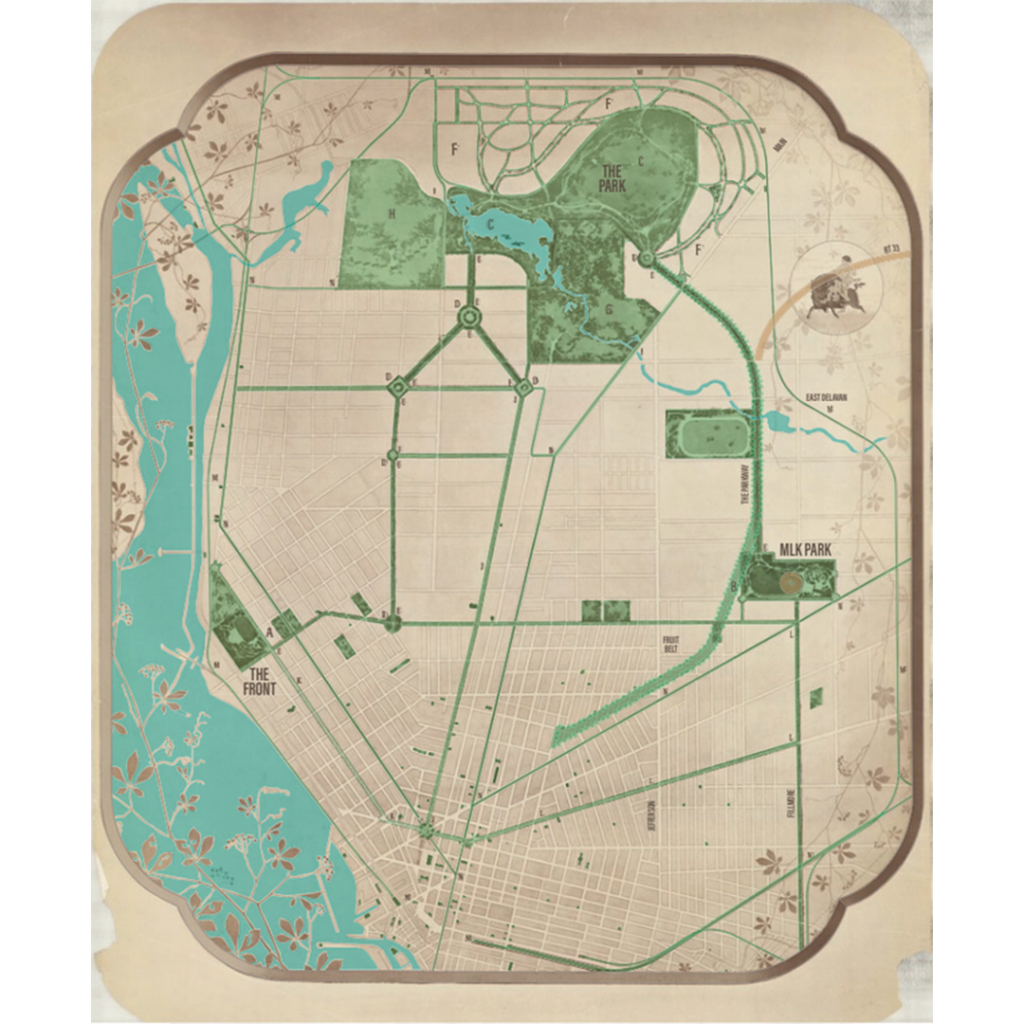
– James Herlihy
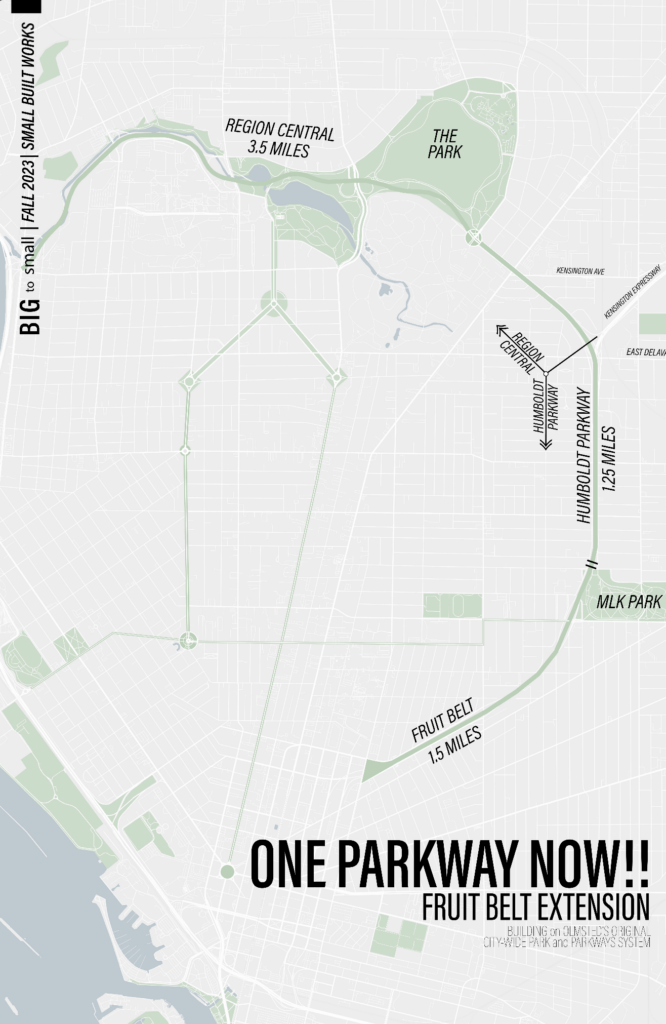
– Jack McGowan

